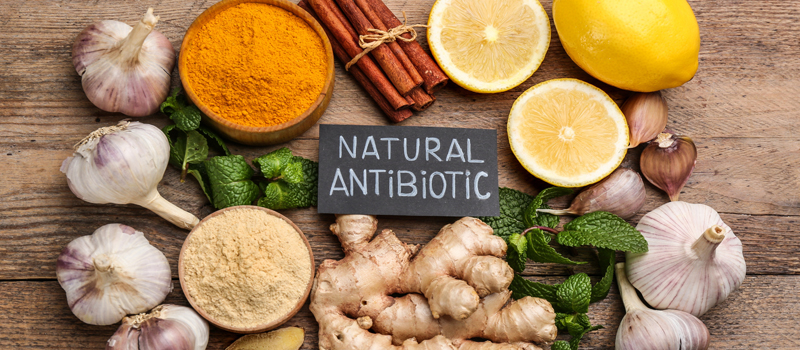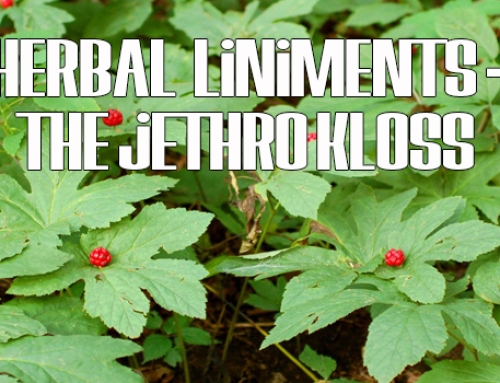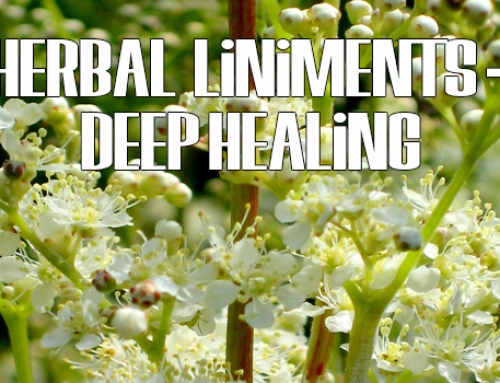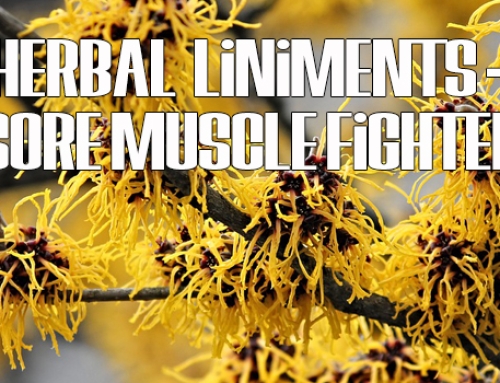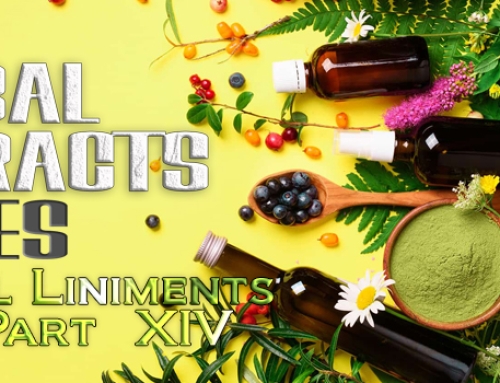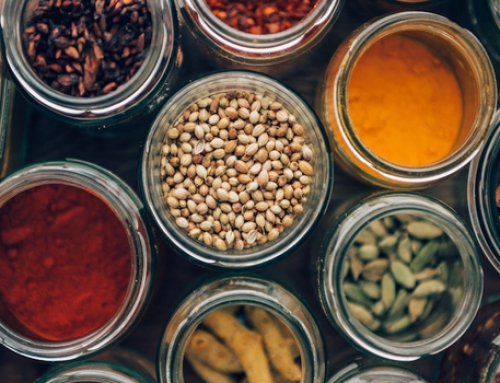Before the advent of modern penicillin, if you got a wound of any significance you had to be awfully careful to avoid infections. If it did turn, there was very little that you could do to stem the tide of that infection, barring cutting off the limb. And if it were on your torso you were as good as gone when sepsis set in. Well, that was according to the medical knowledge of the time in the western world.
Since Alexander Fleming’s discovery in the 1920’s, and with further advances in antibiotic research, we’ve been able to make drugs that treat different types of bacteria. Lives all over the world have since been spared.
Those prevailing voices did not take into account what was used by native and aboriginal peoples. the info and knowledge about natural remedies that were used by their shamans and medicine men. Luckily for us, there has been renewed interest in the older medicinal crafts, and those old recounts of what was used has been seeping into modern society today.
Science currently has little to offer in establishing plant remedies as effective medicines. They still consider many of them merely supplements. However, the immersion of “super bugs” and the exhaustive use of antibiotics has generated interested in herbal medicine and other “alternative” therapies. Much of the research being done targets the chemical constituents of plants. Less frequently is the whole plant or plant part (leaves, flowers, roots) studied. Likely, it is the whole plant, or plant part, that is most effective, and causes the fewest side effects.
Let’s talk about some of these plants and other remedies.
A. Usnea Lichen (Barbata, Florida and Subflorida)
Usnea is a genus of fruticose lichens that can be found in various environments, including forests, heaths, and tundras across the globe. These lichens are characterized by their thread-like or hair-like appearance, often resembling a beard hanging from tree branches. Usnea lichens are known for their sensitivity to environmental conditions, making them valuable indicators of air quality.
Within the genus Usnea, there are several species, each with its own distinct characteristics. Some common species include Usnea barbata, Usnea florida, and Usnea subfloridana. These lichens play important ecological roles, contributing to the ecosystem by aiding in nitrogen fixation and providing habitats for small organisms. The usnea lichen, which has a body with a netted hair-like texture, is developed through a mutual relationship between fungus and algae.
The one with the highest degree of medicinal value is often referred to as “Old Man’s Beard”, due to its appearance. Often found on trees, it can easily be identified by lightly pulling the main branch of the lichen apart. If it’s usnea, the green outside layer will break, exposing a stretchy white band substance found inside, which should remain intact. However, due to this species being ultra-sensitive to polluted air, it’s rarely found within city limits. The outer portion of the lichen, referred to as the cortex, holds the antibiotic composites, and the inner part (the thallus) contains a substance that stimulates the immune system.
Common ailments and conditions that are thought to benefit from the application of usnea, The usnic acid is found to interrupt the cellular system of Gram-positive bacteria, such as Staphylococcus and Streptococcus, while leaving the necessary natural microbiota intact.
It is a particularly formidable medicinal tool for inflammation and dampness often associated with respiratory and urinary tract infections. Applied topically, usnea can also be effective in fighting against MRSA, and fungal infections such as candida.
Used as a wound dressing, usnea could be a wonderful remedy for infected wounds, such as cellulitis. The drying and cooling attributes of usnea help to reduce heat and redness stemming from the infection. Due to the natural anti-microbial properties found in the lichen, it is often applied directly to an open wound to fight off infection. It can either be mixed with water to form a mixture to be applied, or used as a powder after it’s been dried.
Now the rest of the herbs detailed below do not act as an antibiotic, and no where similar to Usnea, they are antiseptic and/or antimicrobial in their nature and how they affect the human system. Thus they are important figures in this cause of Getting Well.
B. Goldenseal (Hydrastis canadensis)
Goldenseal is a perennial plant that is native to Eastern part of North America. Once used by the Cherokee, contains several alkaloids, with berberine being the most prominent. Berberine is known for its antimicrobial and anti-inflammatory properties,. This herb does so well that it was hunted nearly out of existence in the wild. Attempts to replenish the bounty of goldenseal are being made so growing it in your own garden is probably your best recourse.
Goldenseal has traditionally been used to treat skin infections resulting from injuries such as cuts and scrapes. Also lowers blood sugar, helps with digestion and dries out the mucous membranes, The most effective form is the extract of the leaf of the plant. The extract is applied topically to injured skin. Not only does the leaf extract help with skin and other soft tissue infections, it has also been demonstrated to be effective against some “super bugs.” Bacterial infections (such as MRSA – methicillin resistant Stapholococcus aureus) that we can no longer cure with antibiotics are showing responsiveness to goldenseal leaf extract.
Taking goldenseal by mouth has not demonstrated anti-infection properties, but there is early research being done into use for non-infection conditions, including digestive, respiratory and cancer with Anti-Inflammatory and Immune System modulation effects.
Often combined with the likes of echinacea for synergistic effects. You can take dried goldenseal root and fill 1/3 in a jar, fill it with your extraction liquid to 2/3 of the jar. Seal tight, shake every three to four days and let it steep for up to 4 weeks.
C. Mullein (Verbascum Thapsus)
Often mistaken for the common weeds you have in your garden these plants grow large and full. This is a plant that has many uses, and its delicate, fluffy leaves and vibrant yellow flowers, can be a beautiful addition to your garden and needs to be harvested at certain times during the season. Leaves before the flowers bud in the early summer, flowers during the height of summer and the roots in the fall.
Mullein is a herbaceous perennial, a gentle herb that stops coughing spasms in children and the elderly, it’s known for reducing ear infections. It also can assist respiratory support, anti-inflammatory properties, and the ability to soothe the skin. If you are purchasing mullein in its dried form, make sure it is free from mold, dust, and other contaminants. If you are harvesting your own mullein, make sure you are collecting it from an area that has not been exposed to any kind of contamination, such as pesticides or other chemicals.
It is important to be aware of any potential side effects or interactions with other medications that you may be taking. Mullein can interact with a number of medications, including anticoagulants, diuretics, and immunosuppressants.
When you use it in a tea infusion use 3 to 4 grams of the dried cut herb, and once in a tincture use 7.5-10 ml twice daily.
D. Yarrow (Achillea Millefolium)
The species names translates to “1000 leafed” in reference to its ferny, finely divided leaves, but you can think of the herb as having a million uses. Also known as Wound Wort, for it’s ability to staunch off bleeding, ease injury pain, and speed healing in triage scenarios. Grow this gentle herb to help the whole family during cold, cough, and flu season; for skin irritations, the healing of wounds, and helps to clot the wound as well; internally, helps with blood flow, strengthen the lining of blood vessels, and capillaries. It can assist with varicose veins, spider veins, and easy bruising.
Yarrow has antibiotic, antioxidants, antimicrobial, and astringent abilities, can have internal, and external uses using phenols flavonoids, and sesquiterpenoids. A perennial where the flowers, leaves and stalk are the most potent,
Remarkably, a simple poultice with yarrow, packing the fresh or dried herb directly on a wound, will stop a slow bleed. It’s a superior herb for lowering fevers, bacterial infections, phlegm from respiratory viruses and lowering of sugars in the blood. Do not use if you are on blood thinners.
When it is in liquid form (tinctures) use only 1 or 2 ounces per serving at least twice daily.
E. Wild Indigo (Baptisia sp.)
Here’s another herb and its remedies with antimicrobial, analgesic and antiseptic properties – being effective against bacteria, fungi and viruses – can be used to prevent illness, which is always preferable to having to have to treat illness. A perennial that takes a few years to mature with white, violet or yellow colored flowers.
Indigo root extract has been used in areas of the world to treat typhoid, diphtheria, malaria, and flu onset fevers. We also have seen it being used to help cases of salmonella related food poisoning. What’s the connection between typhoid fever and salmonella? The bacteria that causes typhoid fever is similar in many ways to the bacteria that causes salmonella. Potentially, indigo root extract could help prevent food poisoning from salmonella when used in the kitchen as part of cleaning solutions.
It also can tackle the simple of easing insect bites, in a cold tea to stop vomiting, ease constipation, as a mouthwash to treat oral ulcers, and help knock out the common cold once you are symptomatic. All the way to treating Scarlet fever, pharyngitis as a tea, along with assisting asthma, persistent coughing, bronchitis and some kidney diseases. Combined with Mullein or Yarrow, it can be a powerful help for ridding the body or a wound of infection.
Used separately or in combination with another herb, Wild Indigo can be used internally and externally. In a tincture of 30ml bottles, 10 drops should be sufficient in a daily use situation. Use in moderation and keep it away from bovines in large quantities
F. Burdock (Arctium lappa)
Another perennial plant, can quickly proliferate, with huge rhubarb-like leaves that, in it’s second year, give way to tall thistle-like blooms and burrs. A bitter herb, has been used as a detoxification herb for the liver (liver functions, bile production and GI tract health), lymph nodes, and blood (clears toxins from the blood). It has also shown to be effective with arthritic relief. Use it in a poultice and it can assist in clearing infections from a sore.
Having the antiseptic properties can also help with the common illnesses we come down with i.e. colds, coughs and flu symptoms. Put the more sweet roots into a soup, with carrots, greens, reishi mushrooms along with a crushed garlic cloves and you have a recipe for healing. In a tincture you would need to use 1 tsp 3 times daily.
G. Yerba Santa (Eriodictyon Californicum)
One can grow this evergreen herb in dry western habitats. Often it’s found wild near chaparral plants, another antibiotic based plant. Woody lower branches, leafy with white and yellow flowers. Of which the leaves and the flowers are primarily used in herbal remedies. Known also as ‘Holy Herb’ or ‘Mountain Balm’. has a strong sweet smell to it when crushed, and powderized.
Yerba Santa is the “Dayquil” of the herbal remedies. Used to treat fevers, colds, coughs, and stomach aches. an herb that reduces upper respiratory congestion. Topically, it can also assist in rheumatism with the young leaves crushed in a poultice with its anti-inflammatory properties.
Can be best used in tea infusions up to 4 times a day or in a highly concentrated tincture. If in MCT oil, then a healthy dose of 45 drops a day will do for the desired effects.
H. Cumin (Cuminum cyminum)
Cumin is a spice commonly used in Middle Eastern and East Indian cuisines. Taken from the seeds of the Cuminum species or parsley family of plants. In addition to its culinary uses, it exhibits antimicrobial activity against the bacteria in the mouth that can cause tooth infections and decay.
This has been found to protect against food-borne bacteria with it’s antimicrobial properties, has been used in the past for gastro-intestinal protections for bowel distress and diarrhea. It can help to regulate blood sugar in the blood, and reduce oxidative stress, free radicals protection, suppressing inflammatory marker expression, and modulating the signaling pathways controlling cell death.
It will often work when pharmacological preparations will not. It therefore has potential to be effective in fighting “super bugs.”
Often received in food, the herb can be used liberally as a spice for the food you intake daily.
I. Yellow Dock (Rumex Cripsus)
Yellow dock is similar to Burdock, in what it can affect and ease. Liver decongestant, Lymphatic releaser, anti-inflammatory for swollen tonsils. It is more for the lower regions of the body in the GI tract. A perennial plant with many different kinds of “Dock” that exist and though some have similar properties, identification of the proper material is important. This particular plant has narrow leaves (Rumex translated from the Latin means Lanced) , which are usually curly (crispus) at the edges, vary in size and are not found in great numbers higher up the stem of the plant. The flowers become a green seed that turns a deep red color in the fall, traditionally marking the proper harvest time for the root.
Recommended to use in smaller quantities per serving, and never be used by women who are pregnant. However, indigenous tribes across the Northern and Central areas of the U.S. used the leaves for sustenance, just like spinach. They boiled and mashed the root to hemorrhoids and infected breast tissue.
To pull out an infection from an area, place three tablespoons of mashed root on a cloth four by four inches. Place it over the infection with a clean cloth the same size. Let it sit for several hours, then replace it. Repeat until the infection subsides.
K. Blessed Thistle (Cnicus Benedictus)
From the Thistle species family, reported to have been used against the plague in the Dark Ages. One can easily forage or grow this prickly herb, which would be best because it is only found in the wild around the Mediterranean. Please harvest it using gloves and cut off the stickers. It’s violet flowers, leaves and upper stems are used for the medicinal assists that can be had
Holy Thistle, its other name, is a multipurpose antibiotic ally. Primarily used to help non-pregnant mothers with gestating breast milk production and help with balancing the woman’s hormones, also has an effect of increasing bile production and as a diuretic. It, like it’s close counterpart Milk Thistle, helps with liver health and regeneration. Used in conjunction with the other herbs has been found to help alleviate or prevent bacterial infections. Common colds, flu’s and even Staphylococcus and Streptococcus respond to it by its blocking of the enzymes needed for bacterial replication.
Used in a tincture, it breaks up respiratory mucus, increases immunity, decreases harmful bacteria and fevers, cleanses the liver, aids circulation. Most supplements are offered in 300-milligram to 450-milligram formulations; thrice-daily doses are considered safe within this range. Doses over 5 grams (5,000 milligrams) per day are associated with an increased risk of side effects. Blessed thistle tea can be made by steeping 1 to 3 teaspoons of the dried herb in one cup of hot water for 10 minutes. When applied topically, it becomes an analgesic.
L. Elderberry (Sambucus nigra and its subspecies)
Known as a powerful antioxidant with many uses from heart health to immune system support and an anti-inflammatory, this berry comes in clusters of the Sambucus tree. Elderberry, whether or not it has antibiotic properties, helps to stabilize overall health and strengthen the systems in the body. It also contains the likes of vitamin A and C, potassium, calcium and iron.
Elderberry has been studied to prevent respiratory infections that are common among airplane travelers. When used for the 10 days prior to travel, elderberry was found to reduce cold duration by approximately two days, and also to reduce the severity of cold symptoms. A universal use herb can be used occasionally or daily to sustain one’s level of health and the bolstering of the functions of several organs within the body.
Most readily accessible in a Syrup Infusion, you can also use it in a tea blend with the other herbs that support the adaptogenic properties of the herb..
M. Olive Leaf (Olea Europea)
Beyond using the oil of the olive tree for good healthy cooking, the Olive Leaf, and its extract have great applications as well. Growing and maintaining olive trees in warmer climates is common and if you haven’t access to them because of where you live, you can also currently find the extract and the dried leaves in the likes of Good Earth stores.
Like many of the herbs on this list, there are multiple applications, the olive leaf can also be used because of its antiseptic properties and can be used as a source for antibiotic affects. The extract is very beneficial for treating conditions caused by viruses, retrovirus, bacteria, as well as protozoa. It interferes with the critical amino acid production of viruses and may inactivate the virus by virus budding or assembly. It can also penetrate the cells and stop viral replication.
It is effective against antibiotic-resistant bacteria, fungi and yeast strains and stops the production of micro-toxins, which contribute to chronic fatigue. It fights infection and decreases viral symptoms, inflammation, high blood sugar, lowers blood pressure and fevers. For daily maintenance you can use it in a tea infusion, but mostly available and usable in its extracted oil form
Make sure you drink plenty of water to help flush out what the Olive Leaf extract is working to kick out. Check with a qualified practitioner if you have high blood pressure before using it.
N. Turmeric (Curcuma longa)
Turmeric is a root that once grounded into powder has so many uses; As a spice for food, an anti-inflammatory, neuroprotective, cardioprotective, anticancer, metabolic protective, and antioxidant properties. Used for centuries for its healing properties and contains several micronutrients such as manganese, iron, vitamin B6 and potassium.
It can also be used when some wounds heal more slowly. Diabetic wounds and pressure (bed sores) ulcers are skin wounds that are difficult to treat and if untreated, can lead to gangrene and systemic infection (sepsis). Put into a poultice and strapped directly with the gauze to cover the wound. Place the turmeric paste in the poultice directly on a wound and cover it with a small clean square of cotton cloth. Let it sit for 20 minutes to one-half hour. Repeat as needed until the wound heals. You can keep the infections at bay, long enough for the wound to heal properly.
Turmeric has been found to be effective in treating this type of persistent wound. Turmeric is anti-inflammatory, antimicrobial and has chemical constituents that promote healing and reduce scarring.
To be most effective externally, turmeric should be used in an ointment (for the affected joints) and internally in a alcohol tincture.
Turmeric is a superior antibiotic for healing all types of infections, especially wounds. To make what is called Golden Milk, you can mix one teaspoon of turmeric powder, crushed black pepper with a cup of milk warmed slowly on the stove.
O. Oregano (Oreganum Vulgare)
Oregano is easy to grow in a sunny area, as a robust herb that is often used in cooking recipes. When it is in the form of an oil extract or tincture, it can kill bacteria, fungi, parasites, and microbes, and calms the nerves. It can help with UTI’s, menstrual cramps, heartburn, digestive issues, athlete’s foot, skin conditions and high cholesterol just to name a few ways.
Ingesting oregano tincture is one way to heal infections. Oregano oil and its Essential Oils relative are not to be used the same. As a reminder, Essential oils are meant to be used topically because of their high concentrations. Regular Oregano oil is intended for both external AND internal purposes.
The Oil derived from crushed oregano leaves into a carrier oil (steeped for 2-3 weeks) or as a Tincture with dried leaves infused in either a high proof alcohol or in glycerin for 5-6 weeks for more potency.
P. Thyme (Thymus Vulgaris)
Just like oregano, thyme grows well in reasonably sunny area. It can do and affect the similar things like its herbal sister and can also help with respiratory, bronchial (asthma and chest congestion) as a antimicrobial and antiseptic carrier.
Uses can include using the already infused oil or fresh leaves in a syrup concoction to subdue respiratory and digestive infections and reduce coughing spasms. It can even be used as a restorative gargle when you lose your voice. To make the syrup, place a cup of thyme in a quart jar and cover it with raw honey. After twenty to thirty days, strain the honey into a new, clean glass jar and put the cap on.
Like your Oregano oil, store in a cool dark place. When any internal infection symptoms are detected, soothe them by taking one teaspoon of thyme-infused honey every four hours.
Rub the syrup over a small wound and cover it with a bandage to heal an infection.
Q. Garlic (Allium sativum)
The garlic bulb that is common in cuisine also has medicinal value. The antibacterial components of garlic are activated when exposed to air. It’s all in the activation process. When you crush a garlic bulb, you’re not just releasing its pungent aroma; you’re also activating its antibacterial components. These components spring into action when exposed to air, making crushed garlic a potent ally against a variety of bacterial infections.
In the world of science, garlic’s antibacterial prowess is no secret. In laboratory settings, known as “in vitro,” garlic has demonstrated its effectiveness against a range of bacteria, including those that typically respond to penicillin. Think non-MRSA staph infections, which are responsible for numerous health woes in people. While garlic hasn’t been proven to tackle “super bugs” like MRSA, the research hints at its potential, albeit with limitations.
Garlic isn’t just a bacterial buster; it’s also a formidable foe against fungal infections. In particular, it has shown promising results in combating Candida species fungal infections, even those that stubbornly resist commonly used anti-fungal medications. What’s more, garlic outshines other plants in the fight against Candida infections, including neem, plants in the borage family, Holy basil, and fenugreek.
R. Ginger (Zingiber officinale)
Ginger has historically been used to treat coughs and asthma. But also has been used to settle an upset stomach and nausea – That is where Ginger Ale came from. Both the fresh juice of the ginger root and ginger root extract are used. Ginger has been used effectively to treat fungal, bacterial and viral infections. Assist with lowering blood sugar, cholesterol and has anti-cancer properties. Scientific research shows that ginger has potential for use against “superbugs.”
Use boiled ginger root to treat coughs, colds, asthma and other respiratory infections – including pneumonia. Storing ginger with the peel still on will help it keep longer. By putting it in a plastic bag, removing as much air from the bag as possible and keeping it in a cool place, you with extend its shelf life for several weeks. It can be frozen for longer periods of storage.
Yes, it is possible to grow ginger, especially in a pot with just the right amount of sun.
For respiratory or digestive infections, take ½ cup of the powdered herb and wrap it in two layers of cotton cloth, twisting the cloth and securing it with a long tie. Drop the bundle in two quarts of water and boil the water for 20 minutes. Pour the hot liquid into a hot bath and soak in the bathtub letting the skin pores absorb the benefits. Dry your skin, dress warmly, and get into bed.
S. Echinacea (Echinacea purpura)
The beautiful purple coneflower can be found in the central to southeastern parts of the United States. There are many species of Echinacea and they can look almost indistinguishable from one another. The only species with potential for medicinal use are E. purpura, E. augustifolia, and E. pallida. Other species or subspecies of Echinacea may or may not have medicinal value.
Echinacea aids in the process of antibody formation and stimulates the production of white blood cells. It helps to strengthen and clear lymph nodes. It inhibits hyaluronidase (an enzyme produced by bacteria that breaks down compounds that bind cells together), thus inhibiting the spread of infection. It also helps the body fight viral infections. The use of Echinacea purpura to treat colds and the flu is associated with fewer complications and fewer adverse effects than anti-viral medications used to treat the flu.
Like elderberry, we believe there is potential for Echinacea purpura to be used as a preventative for respiratory infections and possibly more.
Can be used in a tea or in tincture form to find its benefits for you.
T. Honey (produced by bees of the genus Apis)
Raw honey emerges as a remarkable and versatile remedy, boasting powerful antibacterial properties. Applied directly onto skin wounds, this golden elixir serves as a potent shield against infections while actively fostering the healing process. Its efficacy extends notably to burn injuries, where it not only safeguards against infections but also facilitates the removal of dead skin cells, expediting burn recovery through enzymatic action.
Regrettably, most honey available in stores undergoes pasteurization, a process that inadvertently compromises its inherent antibacterial and enzymatic properties, rendering it less effective for medicinal purposes. Sometimes it also has added sugars and preservatives as well. Raw honey emerges as the undisputed champion in the realm of medicinal applications, preserving its natural antibacterial and enzymatic attributes, thereby ensuring optimal therapeutic outcomes.
While raw honey boasts unparalleled healing potential, it’s imperative to exercise caution, particularly concerning its usage in children under the age of one. Raw honey may harbor botulism spores, posing a potential risk of botulism infection in infants.
Raw honey’s therapeutic impact acts as a formidable barrier against microbial intrusion, effectively preventing infections and promoting a sterile wound environment conducive to healing. In addition, Through its enzymatic constituents, raw honey initiates the process of debridement, facilitating the removal of dead tissue and paving the way for expedited wound closure and regeneration.
In various corners of the globe, these plants thrive abundantly, boasting unmistakable features and straightforward preparation methods for medicinal applications. Many of which you can grow in your own backyard. Their potential shines particularly in scenarios where conventional antibiotics prove ineffective. As scientific research delves deeper, we unearth a reservoir of knowledge lost amidst the decline of botanical remedies in favor of synthetic pharmaceuticals of the last century.
Look at the following recipe, and prepare antibiotic tinctures for the usnea lichen by covering one cup of the dried herb in a one-quart jar with two cups of 80-proof vodka.
Store in a cool dark place for between twenty to thirty days. Strain the herb into a clean one-quart glass jar.
How to Prep Your Natural Antibiotic (Usnea)
This can be used just like the Big Pharma generated and synthesized Doxycycline. Usnea can be applied either externally, or internally. It can be developed into various forms, such as the following:
- cough lozenges
- a tincture or extract
- mouthwash to gargle with, by mixing water with a usnea tincture
- a salve for wound dressing, to apply externally
Some of the above forms can be found in a health store. But, you can also make your own. And, a walk through the woods might be all you need to find the main ingredient. When looking for usnea lichen to make your own remedies, you can often find it in the woods, either on trees, or the ground after falling from the trees. Look for hair-like growths, similar to an overgrown beard. If you find it, place it on cotton or paper until you can get it home.
From there, you will have diverse options in developing a viable antibiotic and treatment to use for the ailments and conditions mentioned earlier. Usnic acid isn’t soluble in water. So, it’s best to extract it in alcohol, oil, or heat. Depending on which form you are seeking to create, or use, the extraction method can differ. For example, when making a tincture or extract, place the usnea into a jar, then cover it with the alcohol. Let this mix sit for several weeks, then strain it into a dropper bottle. Consulting an herbalist would be beneficial if you have any doubt or questions on how to make the proper form, how to apply it, or where to find it.
Overall TakeAway
Getting your apothecary components together is a smart move in today’s economic climate. Getting practice using each herb with real time applications for yourself and those in your close circle can give you the knowledge and confidence as you become more proficient in these healing herbs properties.
These are only a few that do have the same type of properties that you can receive from synthesized antibiotics, and you can see what you can do when they are no longer widely available.

